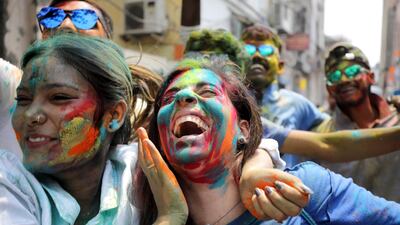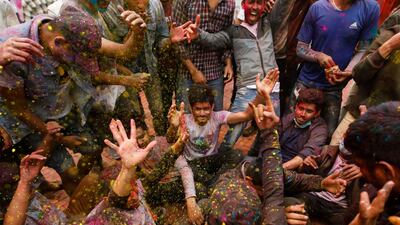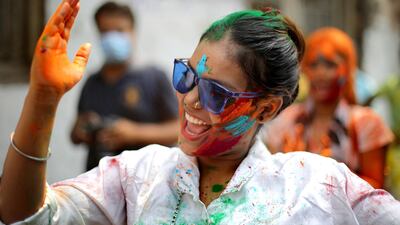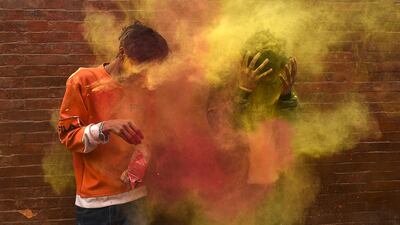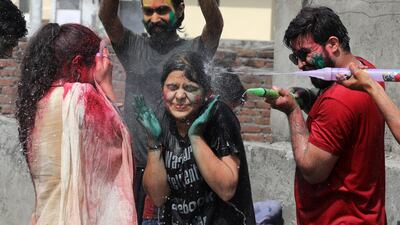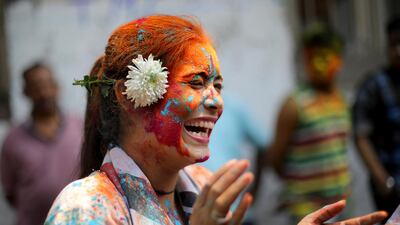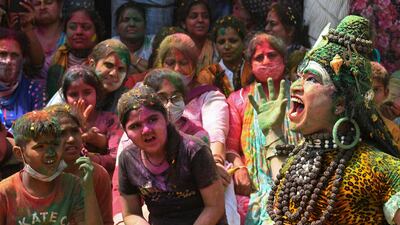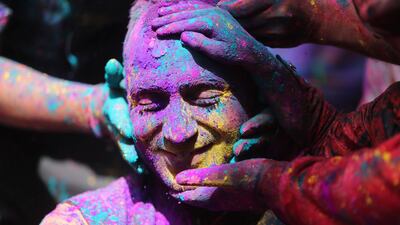Celebrations for Holi, the festival of colour, has now started with many Hindus celebrating the occasion around the world. The annual festival signifies the arrival of spring and the triumph of good over evil. Different countries around the world celebrate differently, although this year will once again be a more muted affair because of the pandemic.
How is Holi celebrated?
In different parts of India, where it’s a national holiday, Holi is adapted to various cultures. In the state of Uttar Pradesh, for instance, women playfully hurl sticks at men, who use shields to protect themselves.
In parts of Punjab, Holi fairs are held and can go on for days, while in the north-eastern state of Manipur, young people perform a group folk dance called thabal chongba on full Moon night, and celebrations usually last for six days. The fun and games with colours, however, is used everywhere.
Holi is also a big festival in Nepal, where it is a national holiday.
What is Holi?
The religious aspect of Holi has its origins in an age-old story, in which evil is embodied in the form of Hiranyakashipu, king of the demons, and his malicious sister, Holika. As a result of a divine blessing, the king cannot be killed by night or by day; on the ground or in the air; neither inside nor outdoors; and not by a weapon or by a proverb. The king arrogantly abuses this immunity by ordering his subjects to worship him alone and to forsake all other gods.
However, his pious son, Prahalad, continues to worship the god Vishnu in spite of his father's commands. Hiranyakashipu and Holika hatch all kinds of plans to kill Prahalad, and they fail every time. When it seems that neither poison, nor a herd elephants, nor a roomful of snakes can harm Prahalad, Holika lures him, through trickery, on to a burning pyre.
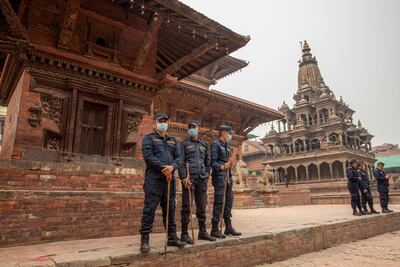
She possesses a magical cloak that protects her from the flames, but once in the sea of fire, the cloak miraculously ends up on Prahalad, leaving Holika to burn. Then Vishnu appears as an apparition (not a person, nor an animal), at twilight (neither day nor night) and tears at the king with his claws (neither a weapon nor a proverb), having pulled him on to his lap (not on the ground nor in air).
Holi also celebrates the New Year in the Hindu calendar, the start of spring and the new harvest. It begins on the day that the Northern Hemisphere tilts towards the sun, the date moving with the lunar calendar.
